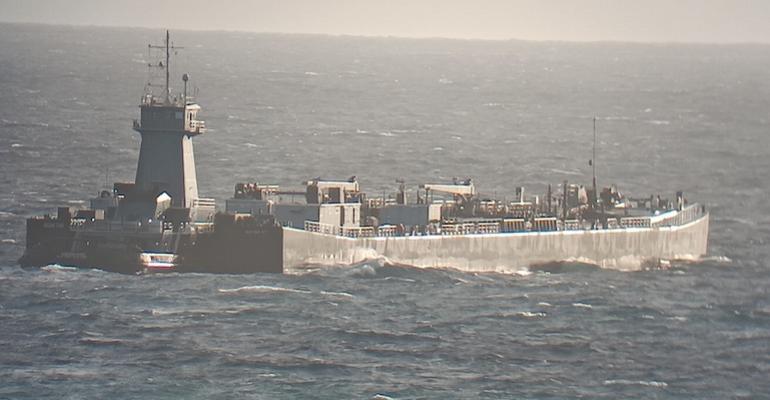Carbon is a by-product in the production of two important alternative fuels - blue ammonia, and blue methanol - hydrogen is a component of both. Carbon generated at facilities that are manufacturing cleaner fuels will need to be transported away from the atmosphere.
Increasingly, the destination will be sequestration in spent oil fields. US maritime companies could benefit, in theory, as new cargo flows are created, particularly around the Gulf of Mexico. Indeed, transport of carbon is now on the radar of Jones Act companies who could move the carbon from alternative fuel producing plants to destinations where it would be injected, typically into underground rock formations.
In late December 2023, Overseas Shipholding Group (NYSE: OSG), with its headquarters in Tampa, Florida, was awarded a $400,000 grant, funded mostly from the United States Department of Energy (DOE), to study the development of a proposed Tampa Regional Intermodal Carbon Hub (T-RICH).
Tampa, Florida is a hub for the fertilizer industry. According to OSG , “The study is intended to evaluate the commercial feasibility of developing an intermediate storage hub at Port Tampa Bay for CO2 captured from industrial emitters across the State of Florida. T-RICH would receive, store, and process two million metric tons of CO2 per year, which would be transported by OSG vessels across the Gulf of Mexico for permanent underground storage. This storage and transport hub will be the first of its kind in the nation and could be scaled to meet expanded volumes of captured CO2.”
In a prepared release, OSG’s CEO, Sam Norton, added: “OSG’s proposed hub site at Port Tampa Bay would aggregate and store CO2 captured from emitters for loading onto specialized liquified CO2 vessels to be operated by the Company. These vessels would then deliver their cargoes to the northern Gulf of Mexico, which has the largest confirmed capacity for safe, deep, permanent underground sequestration of captured CO2.” The DOE suggests that minimum volumes of CO2, to be processed annually through T-RICH, would be 2 million tons.
Deep within a late January, 2024 webcast from financial brokerage BTIG, where Quintin Kneen, the President / CEO of offshore vessel provider Tidewater (NYSE: TDW) was interviewed by equity analyst Greg Lewis, the transportation of carbon, in liquid form, bound for underground storage in oil producing regions, including offshore, came up.
Kneen, responding to questions from the BTIG analyst about the options for older, and smaller - in the 230 ft category OSVs currently cold-stacked in the US Gulf and capable of working in shallow waters, told the audience, “I think that they will be for carbon injection, which is going to be a new activity in shallow areas of the Gulf of Mexico, that could use a smaller boat, and maybe they don’t need all of the attributes that we were using for oil and gas. Perhaps there’s a utilisation level that comes back for those boats, but that’s five years out.”
Later in the discussion, on the subject of the fleets of smaller Jones Act compliant workboats (including those facing reduced demand from offshore wind projects), he said, “You will see them drifting down to the Gulf [for projects including carbon injection], you will see a lot of those boats taken up, and the market will be tight.”
Green methanol, where production does not generate carbon for sequestration, has also figured in the strategies of another Jones Act vessel owner, Rose Cay Maritime which now operates multiple tugs and tank-barges acquired in the wake of the Bouchard bankruptcy in 2020- 2021.
In mid-2023, Rose Cay had signed a Memorandum of Understanding to work alongside methanol producer Carbon Sink LLC, which is building out a network of green methanol production facilities. As envisioned, Rose Cay, already active in the movement of biofuels, would transport green methanol to shipping customers, providing the Jones Act “supply chain” linkage between Carbon Sink LLC, among a group of green fuel providers that will be supplying Maersk, and vessels taking on green fuels in US ports.
Copyright © 2024. All rights reserved. Seatrade, a trading name of Informa Markets (UK) Limited.
Add Seatrade Maritime News to your Google News feed.  |

